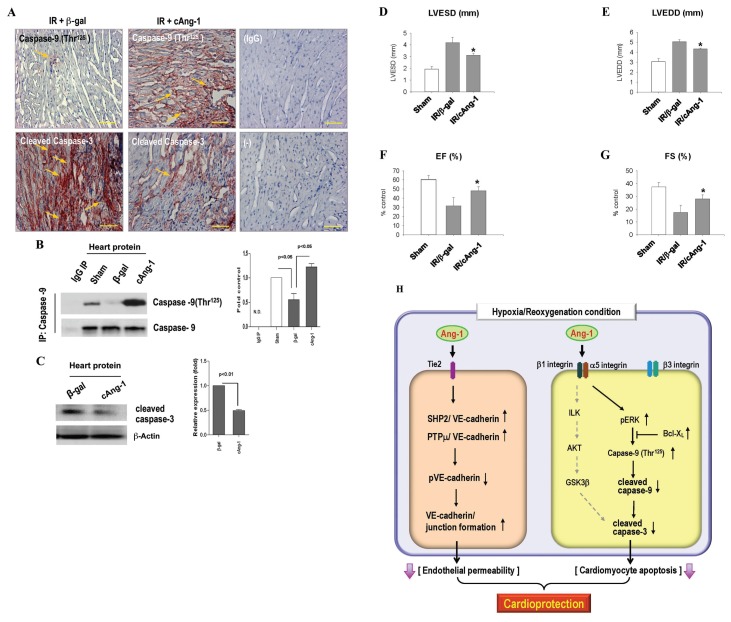Figure 6.
In vivo evidence of cAng-1 to prevent apoptosis of cardiomyocytes in IR myocardium and to restore loss of cardiac performance in a mouse IR injury model. (A) Immunohistochemical staining of phosphorylated caspase-9(Thr125) and caspase-3 (brown) in heart tissues at 4 wks after IR. IR reduced caspase-9(Thr125) and activated caspase-3, which was prevented by cAng-1 treatment. Scale bar = 100 μm (magnification 400×). Representative images were shown (n = 4). (B) Myocardial proteins at 4 wks after IR were immunoprecipitated (IP) with anti–caspase-9 followed by immunoblotting with caspase-9(Thr125) antibody. The same filter was reprobed with anti–caspase-9 demonstrating equal loading (n = 3), N.D., not determined. (C) Immunoblotting using cardiac protein for cleaved caspase-3. Protein level of active caspase-3 was reduced in the cAng-1 group (n = 3). (D–G) Cardiac function measured by M-mode echocardiography 4 wks after IR. cAng-1–treated mice showed small LV-ESD and LV-EDD but greater EF and FS (n = 4 per group). *P < 0.05. (H) Schematic model for cardioprotection by cAng-1 after myocardial IR injury.

